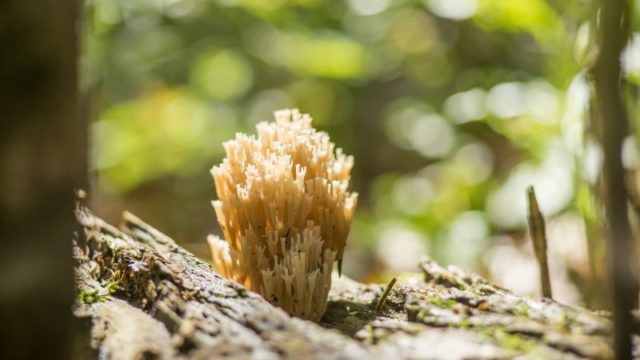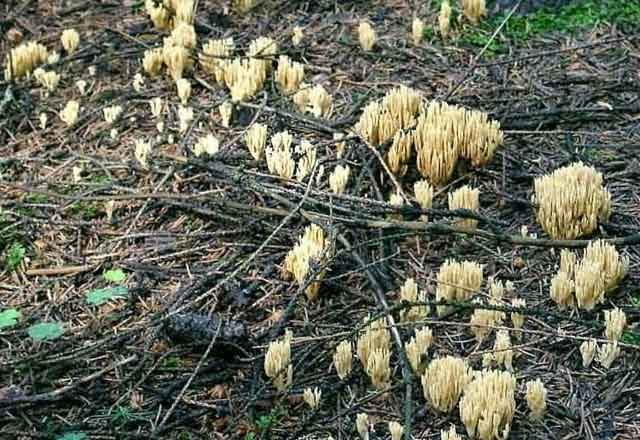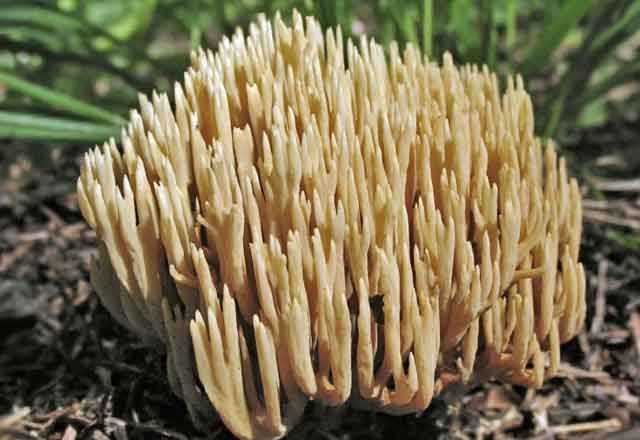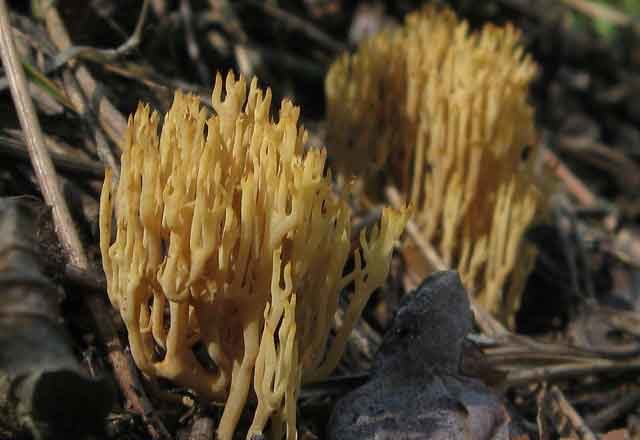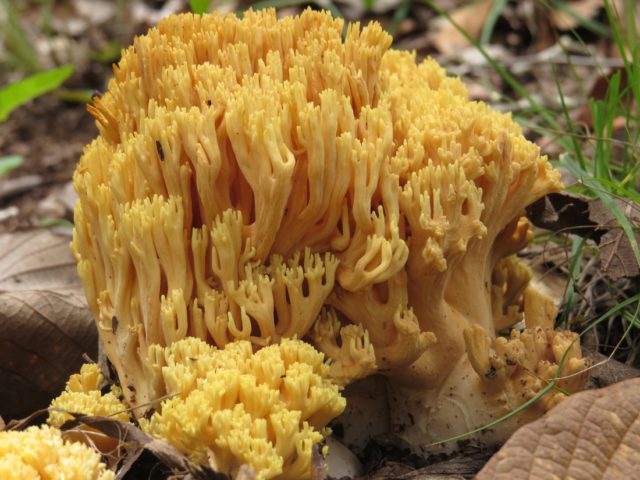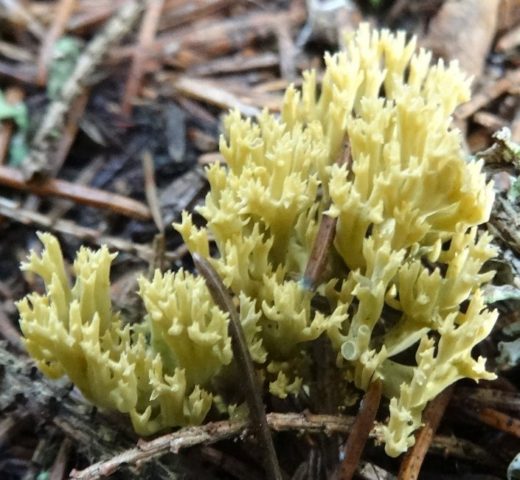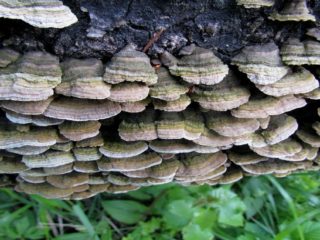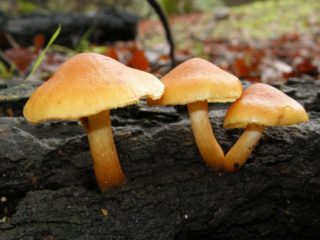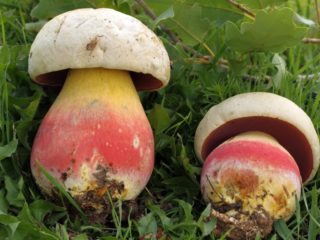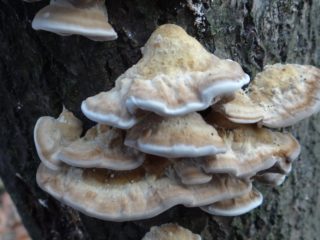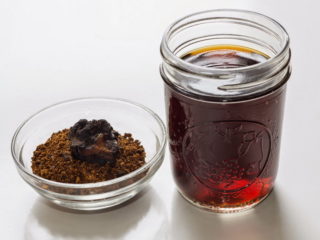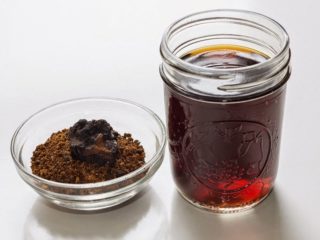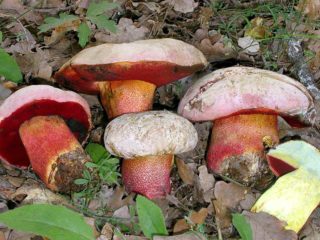Content
In nature, there are many varieties of mushrooms that are considered conditionally edible. Even the most enthusiastic lovers of quiet hunting know about 20 species. In fact, there are many more of them. One of the representatives of little-known species is the common ramaria.
This mushroom also goes by other names: Invala Rogatik, Spruce Rogatik. It is most often found in spruce forests. It is not surprising that few people know him. Externally, ramaria is very different from the usual species that mushroom pickers willingly put in a basket.
Where do common ramaria grow?
Despite its little-known status, Ramaria vulgaris, a mushroom of the Gomphaceae family, is found quite often.It grows in groups, forming “witch circles”. Prefers the litter of coniferous forests and grows in the shade. Shows abundant fruiting from early July to late October.
Abundant growth was noted at the end of July and continues until the end of September. At the beginning and end of the season, the number of mushrooms decreases slightly.
It can be found in central Russia, the southern and northern regions, where there are coniferous forests and plantings. During the dry season, fruiting is moderate.
What do common ramaria look like?
Spruce hornet differs significantly in appearance from other species. The horned mushroom grows in groups, forming rather dense “bouquets”. Ramaria vulgaris is distinguished by a highly branched body with a height of 1.5 to 9 cm. The width of the bushy group is up to 6 cm.
Vertical branches are straight branches, uniformly colored from pale ocher to ocher-brown. The body of the mushrooms is covered with spines or warts and is very rarely smooth.
Young specimens are quite fragile; as they grow, the flesh becomes rubbery. Inval's horned mushroom does not have a characteristic mushroom aroma. There is a bitterness in the taste.
Is it possible to eat common ramaria?
Rogatik Invala is classified as a conditionally edible mushroom. In cooking it is used boiled and fried.
Before use, long soaking with frequent changes of water is necessary. You need to soak for up to 10 hours. An alternative to this method of preparation is boiling, in which the first water is drained.
Taste qualities of mushroom
Ramaria vulgare does not have a mushroom aroma. Most mushroom pickers note rather low taste qualities, so they prefer not to collect spruce hornwort at all.
The pulp of the mushrooms contains bitterness, which can be removed by soaking.
Benefits and harm to the body
Like all types of mushrooms, common ramaria contains protein. In terms of carbohydrate content it is close to vegetable crops, and in terms of the amount of useful minerals it is close to fruits.
Spruce hornet should not be eaten by those who suffer from diseases of the gastrointestinal tract. The reason is the risk of resinoid syndrome, which can cause digestive disorders.
False doubles
Spruce hornet can be confused with similar types of mushrooms:
- Ramaria yellow - conditionally edible species. Other names: bear's paw, deer horns, yellow coral. It has a sweetish taste and a denser consistency. Differs in size. It reaches 15-20 cm in height, 10-15 cm in width.
- Feoclavulina fir (fir hornet, green ocher ramaria) – inedible species. In some sources you can find information that fir hornet belongs to the conditionally edible mushrooms. However, this variety has a bitter taste, which is impossible to get rid of, and low culinary qualities. It has the smell of damp earth, the flesh quickly turns green when broken. The dimensions of the bunch, in contrast to the spruce bagel, are much smaller: up to 3 cm in height and 2 cm in width. The color of the group is greenish-olive.
Collection rules
Common ramaria is collected in coniferous forests located far from industrial enterprises and highways. Young, undamaged specimens are suitable for food. The fruiting body is collected.
Use
Before cooking food, it is necessary to carry out pre-treatment.You need to know that spruce bagel is suitable for cooking on the day of collection. This type of mushroom is not stored for future use. Eat boiled or fried.
Conclusion
Ramaria vulgaris is a conditionally edible mushroom and always requires careful pre-soaking or boiling before the main culinary processing. The taste of mushrooms is quite low. They are consumed fried and boiled; they are not prepared for further storage.
